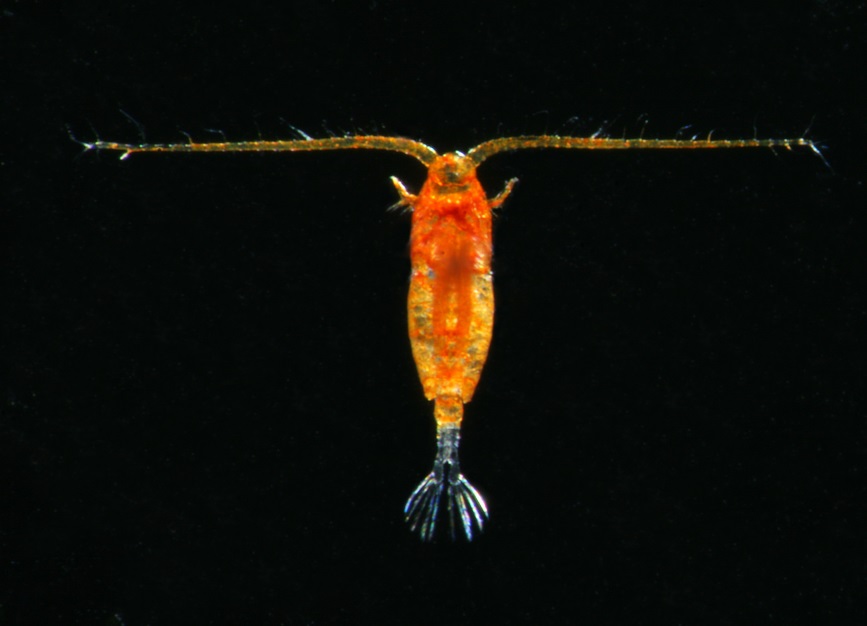Hylander S, Grenvald JC and Kiørboe T (2013). Fitness costs and benefits of ultraviolet radiation exposure in marine pelagic copepods. Functional Ecology. doi: 10.1111/1365-2435.12159
Zooplankton have evolved various mechanisms to protect themselves from the damaging effects of UV radiation: (i) vertical migration that will remove them from the surface area during day time; (ii) protective pigments, such as carotenoids accumulated from their phytoplankton food, that are antioxidants that neutralize the reactive oxygen species that are produced in response to UV radiation, (iii) sunscreens, such as MAAs from the phytoplankton food, that absorbs and radiates UV as heat, and (iv) repair mechanisms that counter the damage to cells and DNA due to UV radiation. Each of these mechanisms comes at a cost. We quantified the tradeoffs of UV protection by measuring the fitness (number of offspring delivered to the next generation) of copepods exposed to UV and fed algae either containing MMA or not containing MMA. The copepods showed no accumulation of carotenoids in response to UV and experienced lowered fitness than an unexposed control group when fed algae without MAA. When fed MAA-containing algae, however, the fitness surprisingly exceeded that of the control group. Not only do MMAs cause efficient protection. The elevated MMA content of exposed phytoplankton provided a richer diet too the copepods. Another novel discovery was that marine zooplankton in general has a one order of magnitude lower carotenoid content than freshwater zooplankton. This may be due to a higher pressure form visual predators in the ocean, since carotenoid pigments make the copepods conspicuous to visual predators.
The article can be downloaded from here.
